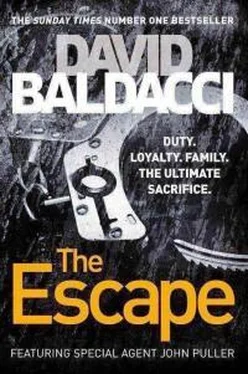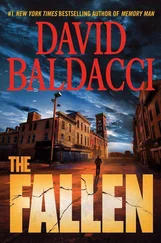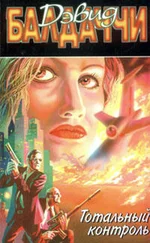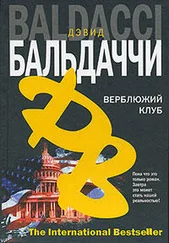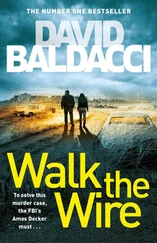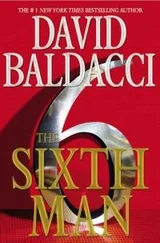“And the people who kidnapped and nearly killed you?”
“They can only surprise me once , Knox. They come after me again, someone’s not walking away.”
“Well, let’s hope it’s not you.”
He looked at her. “And I can count on you to cover my back?”
“You have to ask?”
“I wouldn’t be asking if I didn’t think I had to.”
“Yes, I’ll have your back. Will you have mine?”
“I’ve had your back ever since you showed up, Knox.”
SINCE PULLER AND KNOX both had DoD creds they could access the fort through the east or west gates, named Hancock and Sherman respectively, after long-dead Civil War Union Army generals, rather than the main gate, which was how visitors, newcomers, and commercial traffic entered the post.
The fort had been around since 1827, when it was established by Colonel Henry Leavenworth to be a forward base protecting the fragile and highly dangerous Santa Fe Trail. It had been named Fort Leavenworth after then Brigadier General Leavenworth in 1832. The fort had never been attacked by an enemy force, not even during the Civil War. And residing smack in the middle of the country, it never would be, unless the United States had imploded.
They entered through the Hancock Gate. Puller had arranged to meet a representative of the 15th MP Brigade, which had responsibility for securing the fort.
Knox looked around as they drove along the road.
“Nearly nine square miles of Army,” she said. “Seven million square feet of space, a thousand buildings.”
“Fifteen thousand personnel on post, thousands off post, eighty thousand-plus visitors a year,” added Puller.
“Which equals a needle in a haystack,” she concluded.
“A needle we’re going to find.”
“How can you be so sure?”
“Because failure is not an option.”
He pointed to a building as they drove past. “Warrant Officer College. I went there when I got the promotion. It’s part of the Combined Arms Center.”
“Fort Leavenworth, the intellectual center of the Army,” said Knox dryly.
“They train almost all of the Army majors here, and all modern five-stars, from Eisenhower to Bradley, have passed through here.”
She pointed out a building as they drove along. “That’s where the 902d Military Intelligence Group is located – counterintelligence protection of Army assets in a six-state area.”
“Any ties to NSA?” asked Puller, glancing at her.
“Do you need to know that?”
“I wouldn’t have asked if I didn’t,” he shot back.
“I’m afraid I can’t get into that,” she said. “Who are we meeting from the 15th MP?”
Puller frowned and said, “Command Sergeant Major Tim McCutcheon, senior NCO.”
“The CSM? I thought they would have rolled out the top dog for us.”
“Well, the 15th’s commander got his butt canned when my brother escaped, and I guess his replacement was busy.”
“Okay. And what do you really hope to accomplish here?”
“Priority one is to identify the dead guy. Priority two is to determine how he ended up in my brother’s cell at DB.”
“That’s a lot to ask for.”
“Well, if you don’t ask, you sure as hell won’t have a chance of receiving.”
A few minutes later they pulled up in front of the headquarters for the 15th MP, went inside, and were led down the hall to the office of CSM McCutcheon.
The man himself rose from behind his desk, dressed in his ACU cammies in the standard UCP, or universal camouflage pattern, which when viewed through night-vision goggles would simply look black. The uniform was very high-tech. It minimized infrared silhouettes and had markers that would identify friendly personnel in combat zones when seen through NV equipment, and that could be covered up when not necessary. Despite all that, the uniform had been a total disaster. Troops called it “pajamas” because it did not ride well on anyone, no matter how fit they were. The gray color stood out under almost all combat environments except for a concrete parking lot – which was not usually where battles were fought – and the Velcro was badly designed and caught on objects as troops were patrolling, a potential fatal flaw. It had been a five-billion-dollar mistake by the Army, which was planning to spend another four billion to create yet another uniform to replace the barely ten-year-old UCP. But for now, until that day came, the UCP was what the Army was wearing, crap or not. They couldn’t exactly go naked.
Riding on McCutcheon’s left arm was a simple patch with the legend “MP” in black lettering. The branch insignia was two crossed gold pistols representing the Harpers Ferry Model 1805, the first American military pistol. The branch’s distinctive unit insignia had the motto “Duty, Justice and Loyalty.”
McCutcheon was in his early forties, nearly as tall as Puller, and outweighed him by about twenty pounds, all of it muscle. His hair was cut to nearly his scalp and he looked like he could bench-press a Stryker and squat a Bradley. They all shook hands and Puller pointed to the unit insignia.
“Always thought those were good words to live by.”
McCutcheon nodded and smiled. “Heard you came up through the ranks.” He motioned for them to sit down and he sat down behind his desk. “What can I do to help you two?”
Puller explained the issue and McCutcheon nodded.
“I’ve been briefed, of course. The team that responded was made up of all MPs. We pulled from both the 40th and the 705th. It was a full company plus the CO and the first sergeant.”
“A hundred and thirty-two soldiers?” inquired Puller.
“Plus Captain Lewis and First Sergeant Draper,” McCutcheon added.
“Right, for a total of one hundred and thirty-four personnel.” Puller leaned forward. “But what if I were to tell you that on the video feed from that night I counted one hundred and thirty-five MPs climbing off those trucks?”
McCutcheon looked stunned. “I don’t see how that would be possible. We called up four platoons. At Leavenworth an MP platoon has thirty-three soldiers. No MP would report for a mission unless he was called up. It was a potential crisis situation at DB, but we didn’t call for an all-hands response. Four platoons, one company. It’s the way the Army works. You know that.”
“And yet there was one extra soldier who did show up at DB,” persisted Puller.
“Could you have miscounted, Chief Puller?”
“I went over it a dozen times in slow motion. Knox here did the same.”
McCutcheon glanced at her and she nodded. “It’s true, Sergeant Major.”
“So maybe under the circumstances a roll call or head count wasn’t conducted,” said Puller. “Four platoons on six different trucks in the middle of the night – who would notice if an extra guy covered head to foot in riot gear is along for the ride? And I’m sure everyone was under intense pressure to get the MPs to the prison.”
“They were,” conceded McCutcheon. “I wasn’t even on duty and I got a call right away. They were scrambling to fill out the response team.”
“Who gave the order for four platoons to form the response team?” asked Knox.
“Colonel Teague.”
“The 15th’s commandant, until he was put on admin leave,” said Puller.
“And he was also the head of DB,” added Knox. “And he was on duty that night, right?”
“Yes. When the backup failed and everyone heard the explosion and the gunfire, he got right on the direct line here and ordered up the company of MPs.”
“And those noises were only heard in pod three?” said Puller, and McCutcheon nodded. “And no source for those noises has been found?”
Читать дальше
